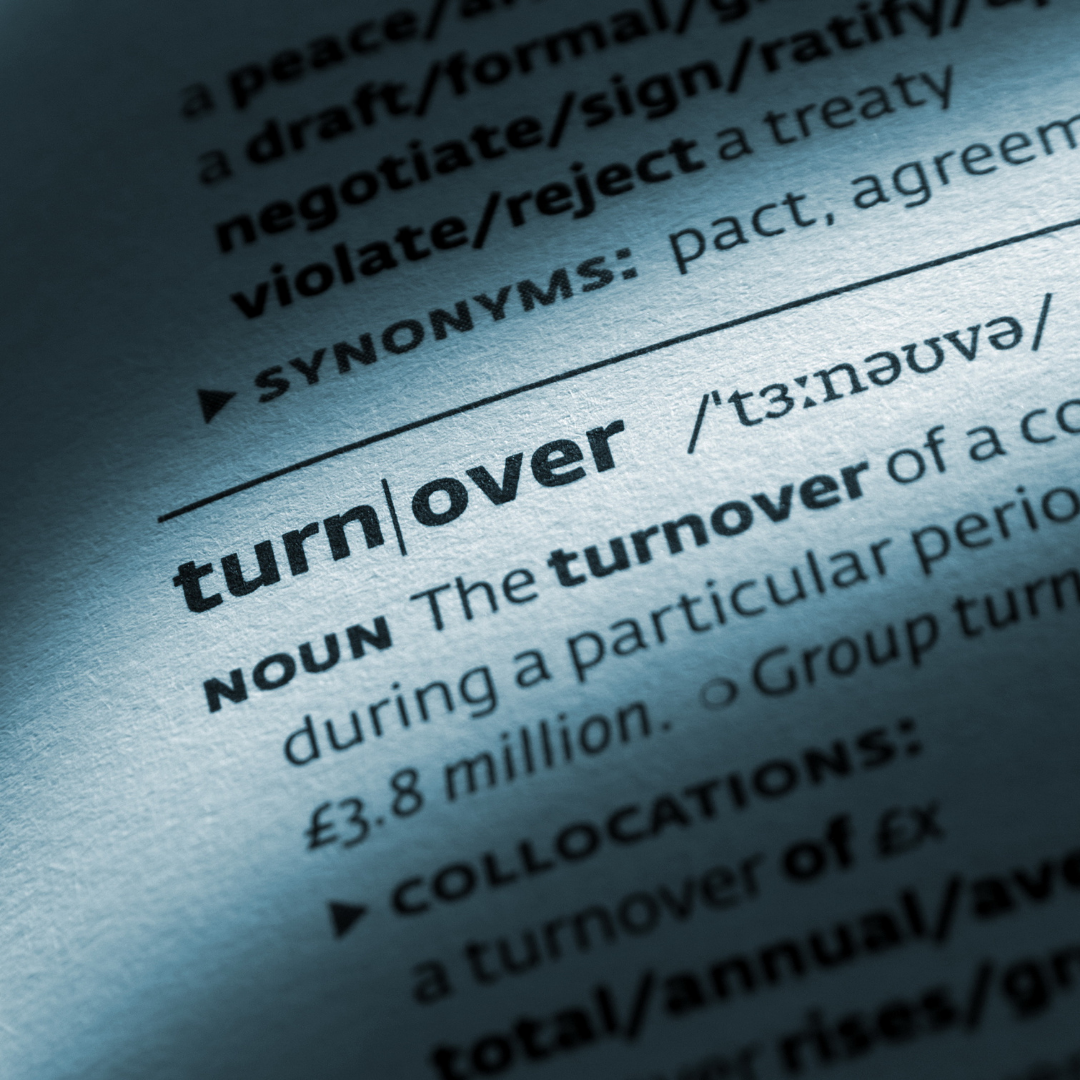What Is Turnover in Business and How Is It Calculated

You may have heard of the term “turnover” quite often when talking about business. Turnover, along with assets, accounts receivable, equity, net loss, profit margin, etc., are some of the business jargon you must learn and know about to understand the conditions of your business operations.
Turnover is an accounting concept. It is used to calculate the incoming cash flow from accounts receivable and the rate of the company’s inventory investments. However, most people often confuse it with profits, which is a measure of earnings, whereas business turnover is a measure of success.
So, if you are still confused about the definition of business turnover and how it is calculated, hopefully, this article can help you out.
What Is Business Turnover and Why Is It Important?
Turnover is defined as the total sales or net income made by a company during a specific period. In other words, it is the net sales generated by a business. The period could be a particular month or a year. And the quicker the turnover, the higher the rate of trade commissions issued.
The annual turnover along with profit are the starting and concluding points of the income statement. While the former is used to describe the net sales generated, the latter is used to determine the residual earnings after deducting expenses from net sales.
Turnover can refer to the business income for trading and over-the-counter sales for retailers. For recruitment organizations, the income or sales is the value of fees generated from placements. So, an investment agency will not have the same percentage as a real estate agency.
It considers the cost of a product and services, along with any paid expenses, including shipping charges. All fees and commissions should be included and the exact figure required for tax return.
If calculated incorrectly, you might be accidentally committing tax fraud and be subjected to tax liabilities by not registering for VAT when you need to. The figure also helps in courting investors besides helping in drawing a plan to meet profit goals. For example, a lower gross profit against a high turnover rate is a sign of lowering sales costs. On the other hand, a lower net profit against an excessive turnover rate indicates the business to have more financially efficient operations and maximize sales.
Therefore, in order to eliminate all fallacies, you might want to ensure that all financial records are accurate at all times and maybe, take advantage of the accounting and digital forensics services offered by firms like Eide Bailly and similar ones.
Alternatively, you can also opt for an automation software that can manage the finances to calculate profits, losses, sales, capital gain, etc., and manage your accounts. Enterprise Performance Management software can process your business goals, operations, and finances to closely analyse these factors and generate a report predicting and forecasting the future risks and overall business turnover. Applications like epm, CPM, and ERP software can automatically generate data analytics to create a progressive report on various business factors that can help with business expansion as well.
![]()
Other Definitions of Turnovers
The term ‘turnover’ in business has more than just one meaning. In European and Asian countries, overall turnover is used as an alternative to the business’s gross revenue.
There are also receivable turnover accounts to determine a company’s effectiveness in collecting its receivables or collecting payments owed by clients. The receivable turnover ratio is proportional to the company’s efficiency of its operation, business performance, and the quality of customers.
Inventory turnover rate measures the cost of goods sold (COGS) per average value of inventory, helping investors understand the stakes of providing capital. The higher the inventory turnover, the more profitable the company seems and helps secure investments.
Finally, there is employee turnover. It is used to figure out the number of employees and staff leaving the organization during a specific period of time, typically one year. It also calculates internal staff regulations, such as individual departments or demographic groups.
Turnover can be both voluntary and involuntary. If an employee chooses to leave the company for a better opportunity, change the workplace environment, or avoid conflict or poor management, then it is voluntary.
In contrast, involuntary turnover is when an organization terminates an employee permanently for different reasons.
How to Calculate Business Turnover
Typically, the accounting period for calculating business turnover is a year; it is done on an annual basis. And all your accounting department has to do is keep accurate records of the sales, and then precisely add together all generated during the set period.
It is a base figure which can be used to find out the gross profit and net profit. To do that, you have to deduct the cost of goods sold for the former and then minus all operating and other expenses for the latter.
For example, if the turnover of a business is $50,000 and COGS is $20,000, then gross profit is $30,000. With operating expenses of $15, 000 the net profit would be $15,000.
Business turnover is not a solid measurement unit for success and works better when compared with other metrics.

-
Accounts Receivable Turnover Ratio
Determine the revenue from credit sales excluding returns from clients to figure out the net credit sales. Also, calculate the average account receivable balance by adding the starting and concluding value of accounts receivable and dividing it by two.
Accounts Receivable Turnover = Net Credit Sales divided by Average Accounts Receivable
-
Inventory Turnover Ratio
Similar to the accounts receivable formula, the inventory turnover ratio is also easy to comprehend.
Inventory turnover formula = Cost of Goods Sold (COGS) / Average Inventory
-
Employee Turnover Rate
The equation you need for annual turnover ratio for staffs = the total number of leavers in a specified period / average number of employees in the same period x 100.
To determine the average number of employees, add the number of staff from the starting of the period of time to the total number of staff at the end. Then, divide the total by 2.
Knowing your business jargon, especially the differences between different terms, can help you better understand how your company runs. It will also help you determine the best objectives to meet your goals or draw up pivot plans if any changes are required.
Through business turnovers, you can measure the size of your business and determine the right time for registering for VAT.
